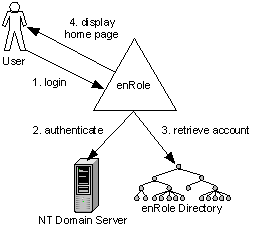

IBM Security
© Copyright International Business Machines
Corporation 2003, 2012. All rights reserved.
US Government Users
Restricted Rights – Use, duplication or disclosure restricted by
GSA ADP Schedule Contract with IBM Corp.
Purpose of this Document
Overview
Provider API Description
The Identity Governance provisioning platform is designed with extensibility as a primary goal. Many of the architectural components have been built using frameworks that can make use of custom extensions. This document describes the framework used within the Authentication component of Identity Governance and how it can be extended. The part of the framework that will be extended by a client will be called the Application Programming Interface (API).
The authentication extensible framework and API has been developed to satisfy two specific goals. One goal is to enable the use of different trusted identity stores. So, for example, a customer may want to make use of the identity information stored on a Windows NT domain server or an LDAP directory.

Figrue 1: Use of Windows NT domain server for identity store
Another goal is to enable the use of different types of keys, typically passwords, to unlock the application to the user. For example, the use of a SecureID token could be used instead of the typical hashed password.
The java-based framework that satisfies these goals is called by the Identity Governance provisioning platform at any time it needs to authenticate a user. The interface used by the platform is abstracted so that any custom extensions would be hidden, and therefore the presence of these extensions will have no impact on the overall design of the platform itself.
The type of client that will use this API is looking to extend the framework to customize the way the authentication is performed.
The purpose of the Provider API is to allow custom extensions to the authentication framework. A client attempting to authenticate a user will not use this portion of the API, but instead, a client that wishes to override the behavior of the system when other clients attempt to authenticate a user.
The authentication framework consists of the SystemAuthenticationAuthority class which makes use of one or more AuthenticationProvider classes to implement the actual authentication algorithms. The SystemAuthenticationAuthority itself merely constructs the correct AuthenticationProvider based on the type of credentials being used and defers to that provider to perform the actual authentication logic. So, to extend or customize the authentication logic to be performed, a client would create their own AuthenticationProvider and register it with the SystemAuthenticationAuthority.
The AuthenticationProvider class is a java interface. Its purpose is to define the method signatures needed for the SystemAuthenticationAuthority to use for authentication. The method that is used for this is authenticate(Credentials userCredentials). When a class implements the AuthenticationProvider interface, it will also need to implement the logic to be used within the authenticate method.
In order to make the implementation of the authentication calls totally transparent to a client requesting authentication, the SystemAuthenticationAuthority must be able to determine which implementation class of the AuthenticationProvider interface to use during a request. This is achieved through the use of factories that can be specified to the SystemAuthenticationAuthority within the enRoleAuthentication.properties file. The client that creates the AuthenticationProvider implementation will also provide an implementation of the AuthenticationProviderFactory interface. This interface will be called by the SystemAuthenticationAuthority when it needs to create a new AuthenticationProvider implementation. Because the details that go into setting up the context and constructing an AuthenticationProvider may be quite different between implementations, the factory’s purpose is to hide those differences and perform the construction behind a standard interface. This interface is defined with the create method. This create method performs its implementation specific construction and returns an instance of an AuthenticationProvider interface.
The enRoleAuthentication.properties file holds assignments of AuthenticationProvider classes to authentication mechanisms. Two of the mechanisms are used when a user authenticates to the provisioning server, (user id and password) and certificate. There is one additional mechanism, service, which is how connectors authenticate to the provisioning platform. To assign an AuthenticationProvider to one of these mechanisms, place the full class name of the corresponding AuthenticationProviderFactory in the file. See below for the default Identity enRoleAuthentication.properties file that is installed with the platform.
########################################################### ## Authentication information ########################################################### # Indicates the type of credentials required by end-user # for authentication. Choices are: simple, certificate enrole.authentication.requiredCredentials=simple # Supported authentication providers # simple provider enrole.authentication.provider.simple=\ factory=com.ibm.itim.authentication.simple.SimpleAuthenticationProviderFactory # certificate provider #enrole.authentication.provider.certificate=\ # factory=com.ibm.itim.authentication.certificate.CertificateAuthenticationProviderFactory # service provider enrole.authentication.provider.service=\ factory=com.ibm.itim.authentication.service.ServiceAuthenticationProviderFactory